Bluebeard is the ninth book in Rachel’s Best Vonnegut Reading Order.
I’ve been wanting to read Bluebeard for weeks. I was excited to finally get to its place in Rachel’s order because a) I’ve heard great praise of it from my coworkers, b) it has actual prominent/interesting female characters (yay, Kurt!), and c) sometimes I need a break from depressed dead guys and the end of the world. Slapstick, Galápagos, I’m looking at you.
Thankfully, Bluebeard delivered on all those promises. If not my favorite Vonnegut, it’s certainly good. There are four entire women present through most of the book (more if you count the ones who make cameos), and two of them are both important and interesting. And Rabo Karabekian, our narrator and hero by default, may not be the happiest camper in the forest, but he at least knows how to laugh at himself. At this point in my Vonnegut reading career, that was exactly the breath of fresh air I needed.
I don’t know about you, but I didn’t grow up knowing anyone named Karabekian. Or Rabo. I guess they’re Armenian names. Rabo’s parents are Armenian, and both escaped World War I-torn Europe under pretty crappy circumstances. Especially his mother, who hides in a pile of corpses to escape Nazi soldiers and ends up with a faceful of precious gems that spill from the mouth of a dead woman next to her. She smuggles the jewels out of Europe in the company of the man who will become Rabo’s father. When a fellow countryman swindles the pair out of all their money, they end up in San Ignacio, California, where Rabo is born.
Rabo’s father is bitter for the rest of his life about how things turned out, but his mother isn’t. She encourages Rabo to become an artist and has him contact an Armenian artist named Dan Gregory, asking to be his apprentice. Gregory doesn’t want to give Rabo a job, but his mistress, Marilee, feels sorry for young Rabo and invites him to live with them in New York without telling Dan. And so begins the life story of Rabo Karabekian: painting, lovemaking, warfare, and the loss of an eye, two wives, and two children.
In real time, Rabo’s about seventy and living as a perfectly contented artistic failure on the family estate of his deceased second wife, Edith. It’s only when an interfering, brilliant, and possibly unhinged woman named Circe Berman moves in with him (not sexually, mind) that Rabo starts trying to make sense of his life through autobiography. Eventually he gets used to Circe, but he still won’t let her see his secret project, the one in the locked barn out back. Even if she does call him Bluebeard for it.
I don’t want to spoil anything, so that’s as far as I’ll go, plot-wise. Now I’ll move on to narrative structure, since that’s always a real hassle to unpack with Vonnegut. Like most of Vonnegut’s work, the narrative isn’t linear. Sometimes we’re with Rabo in his seventies, and sometimes we’re with him in his teens and twenties. But it all isn’t as scattered as you might think. There are two major narratives: Rabo’s old age and dealings with Circe and the two women who work in his house, and his memories of his childhood and early adulthood, with intermittent glimpses into the lives of his artist friends. The two narratives aren’t strictly chronological, but they follow a rough timeline that isn’t difficult to grasp. If you could manage Slaughterhouse-Five, you won’t have any more trouble with this.
Now for the characters. At last, we have women characters to discuss! O jubilation! The two major ones are Circe Berman and Marilee Kemp, Gregory’s mistress. Both of them are likable – except when they’re not. They can be annoying, but they’re also often right. They’re astute enough to know how to play the systems they’re in, but they still make mistakes. And they’re both frustrated by and sympathetic to Rabo. In short, they are flesh-and-blood, 3-D people. Let’s give Kurt a high-five for that.
KVML’s fearless and brilliant CEO, Julia Whitehead, once asked all of us to tell her our favorite female characters in Vonnegut. I hadn’t read Bluebeard then, but now that I have, Circe Berman is by far my favorite. She’s witty, passionate, nosy, and often outright ridiculous; in one of my favorite scenes, she redecorates Rabo’s foyer with red-rose wallpaper and paintings of little girls on swings. She tells Rabo not what he wants to hear, but what he needs to hear, and I love that, too. Marilee is a bit more of a caricature, but she’s still noteworthy, especially for her extraordinary kindness to a young, silly boy, often against her abusive partner’s wishes. I do think she was a little hard on Rabo in the end, but that’s a discussion for another time. (Read: come back when you’ve read the book.)
Before you accuse me of getting all gooey over this book, let it be known that I did have some issues with it. I occasionally lost patience with Rabo’s rambles – no, Rabo darling, I don’t care to hear the entire history of a building in New York City – and sometimes I did find the narrative a little difficult to follow. But I still see no reason not to recommend Bluebeard. It’s got genuine friendships, artistic feats and failures, and at least two happy marriages. If Vonnegut ever wrote a fun book, this is it. Enjoy it.
Emma’s Overall Reaction: This book made me smile more often than it made me question my existence/the way humans have been running things. That’s not a bad thing. Not a bad thing at all.

To buy a copy of Bluebeard, visit this link.



